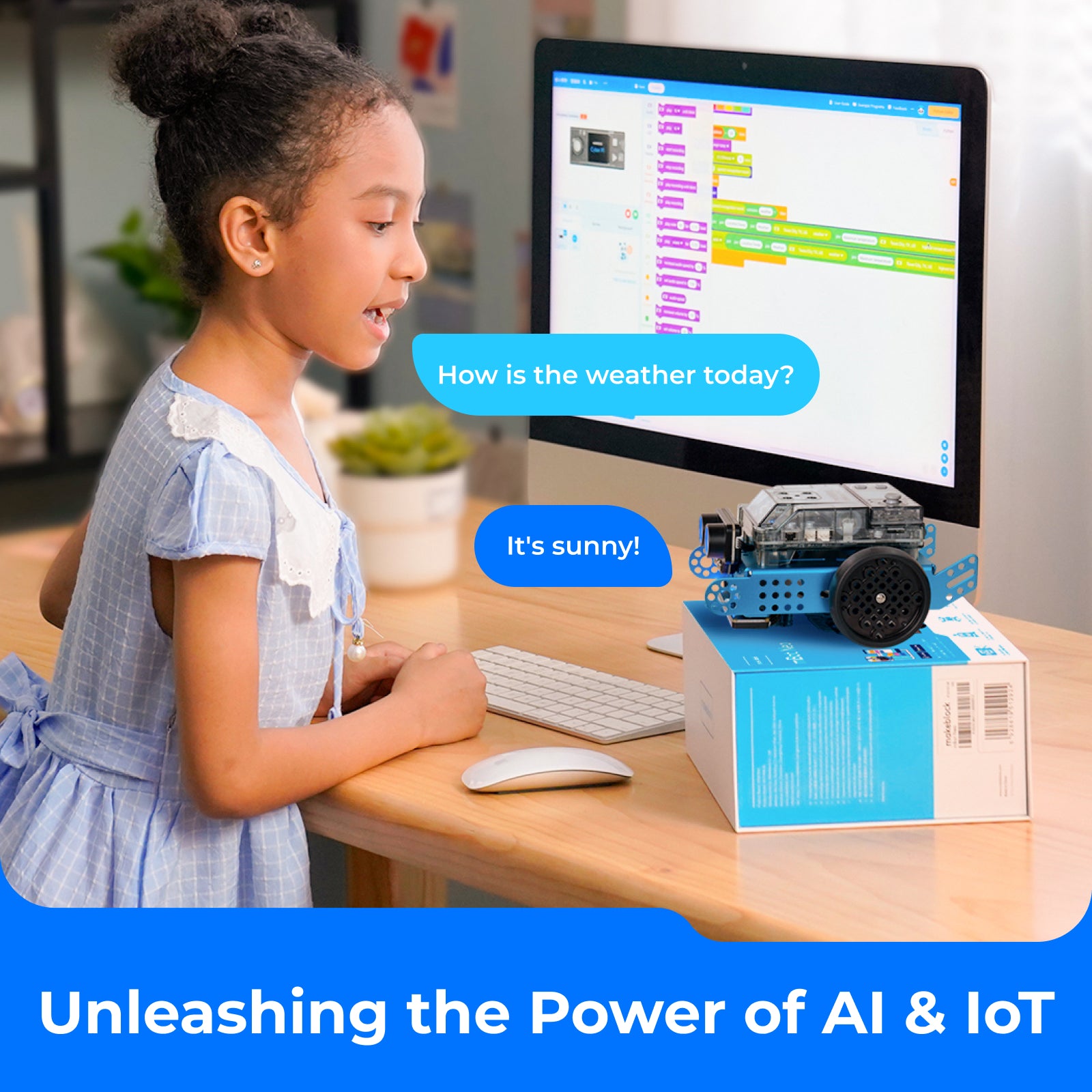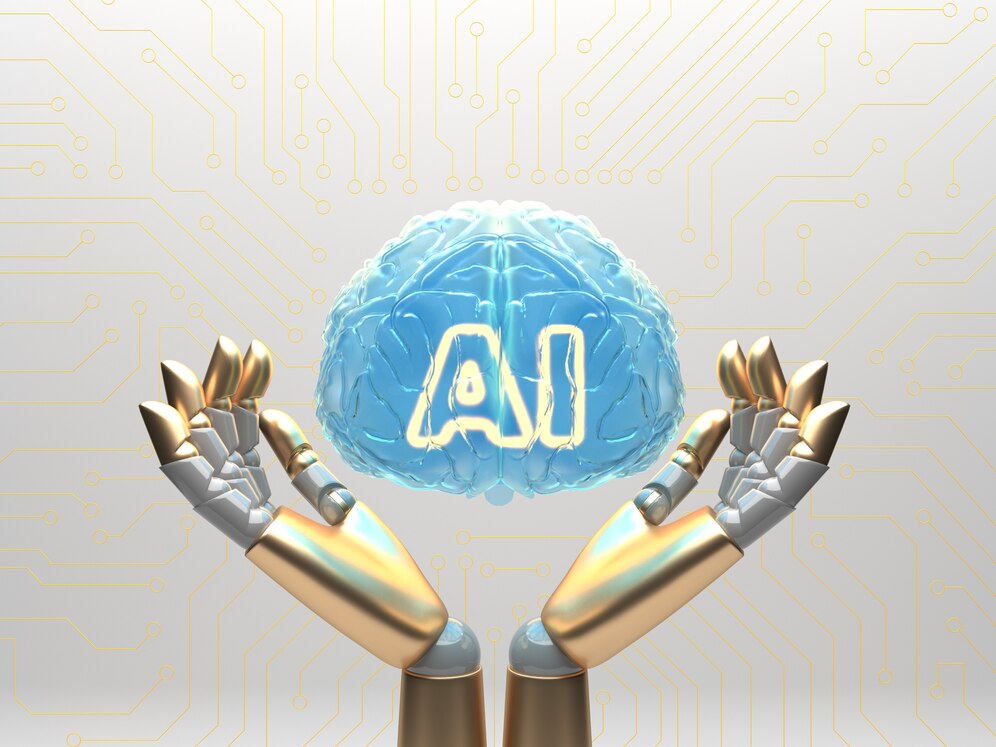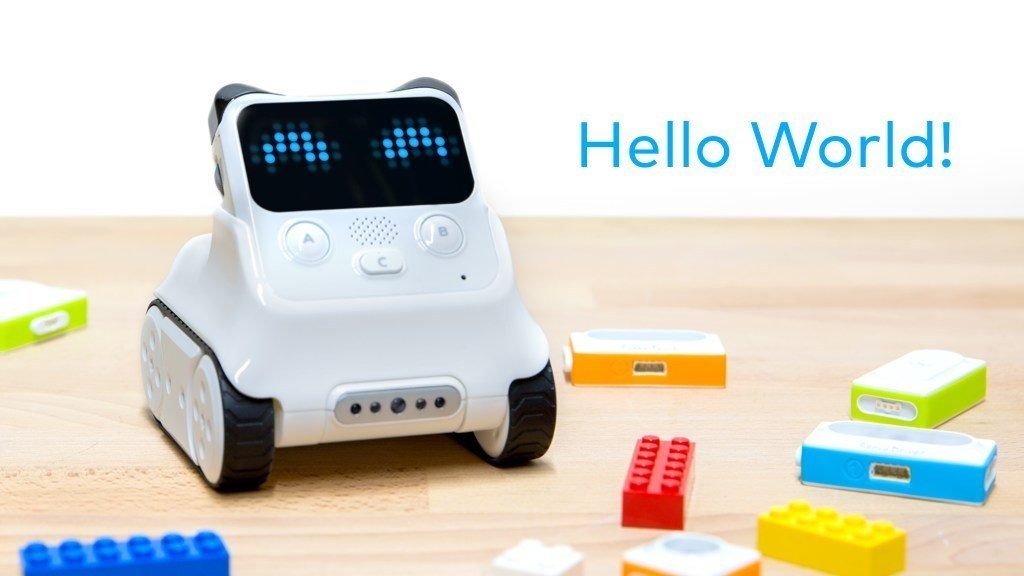April 8, 2024 | Makeblock
AI has penetrated every aspect of humans' daily life. Every time you scroll through social media or do a quick search in Google, you are doing this with the help of AI technology. AI applications are driving profound changes in various sectors, including education, finance, healthcare and manufacturing.
As AI continues to permeate various aspects of daily life, including education, entertainment, and social interaction, it shapes the way our children learn, communicate, and perceive the world around them.
In this blog, with the aim of sparking students' creativity, we curated a list of AI projects suitable for students in different aspects. You can find resources here to empower those young minds with AI-driven technology and tools, which will be must-have skills in future society.
What is the Development Trend of AI Nowadays?

AI has become essential in various aspects of our daily routines, ranging from common household devices, such as voice assistants, to advanced innovations in the field of robotics. There is no doubt that AI is reshaping every life sector and improving its social recognition with time passing over. The trend of AI today is one of rapid growth, with a focus on generative models, increased business integration, policy and ethical considerations, industry-specific applications, and a shift towards meaningful and practical uses of AI technology.
AI is being increasingly applied in industry-specific scenarios, such as education, finance, transportation, smart homes, and healthcare. The technology is being used to enhance services, improve efficiency, and create new solutions. For instance, AI is aiding in disease diagnosis, drug development, risk assessment in finance, and optimizing public transportation systems.
The industry is moving towards a "meaningful AI era," where the focus is on practical applications and value creation rather than just technological advancements. Companies are investing in AI governance to prepare for upcoming regulations and are looking to leverage AI to create real business value.
However, there's a growing awareness of the environmental impact of AI systems, with some models consuming significant energy and emitting high levels of carbon. Concurrently, there's an increase in ethical concerns surrounding AI, such as biases in generative models and the potential misuse of AI technologies.
At the same time, there's a notable increase in global legislation related to AI, with more countries enacting laws that mention AI. This indicates a growing interest and need for governance in AI from policymakers around the world.
What are AI Projects?

AI projects refer to software-driven projects that employ a range of AI technologies such as machine learning, deep learning, natural language processing, and computer vision to create intelligent applications capable of executing diverse functions with minimal human involvement.
AI projects encompass a vast array of applications and systems leveraging artificial intelligence (AI) to address diverse challenges, automate tasks, and enrich user experiences. These projects span various domains, including healthcare, finance, education, transportation, agriculture, gaming, and beyond. By harnessing AI techniques such as machine learning, natural language processing, computer vision, and robotics, these projects aim to analyze data, recognize patterns, and make intelligent decisions.
Educational AI projects aim to tailor learning experiences, provide personalized tutoring, and automate administrative tasks for educators. Transportation AI projects focus on optimizing traffic flow, enhancing navigation systems, and developing autonomous vehicles to improve safety and efficiency.
In healthcare, AI projects focus on improving diagnosis accuracy, personalizing treatment plans, and enhancing patient care through applications like medical image analysis, predictive analytics, and virtual health assistants. In finance, AI projects aid in fraud detection, risk assessment, algorithmic trading, and customer service automation, optimizing operations and enhancing security.
In agriculture, AI projects help optimize crop yield, monitor soil health, and automate tasks like harvesting and pest control. Gaming AI projects involve developing intelligent agents for gameplay, procedural content generation, and player behavior prediction, enhancing gaming experiences.
Across all these domains, AI projects strive to push the boundaries of what is possible, driving innovation and advancing technology to address real-world challenges and improve quality of life. As AI continues to evolve, the potential for groundbreaking discoveries and transformative solutions remains vast, making AI projects a cornerstone of modern technological progress.
20 Innovative AI Projects Sparking Student's Creativity
In an era of information explosion, AI plays an increasingly pivotal role in social management and personal development. There is no denying that our kids are nurtured in an environment filled with AI-driven technology. Under this circumstance, it becomes imperative for educators, parents, and policymakers to provide appropriate AI education on the upbringing and education of our children. So here we list out 10 AI projects that can be integrated into educational curricula or used as extracurricular activities to foster a strong foundation in AI and related skills for the younger generation.
1. Robotics AI Projects

Robotics AI projects combine AI with hardware to create intelligent systems that can perform physical tasks. Robotics AI projects are an exciting intersection of artificial intelligence, mechanical engineering, and computer science. They challenge students to design, build, and program robotic kits that can interact with the physical world, providing a hands-on learning experience that boosts creativity and problem-solving skills.
Interactive Educational Robots: Interactive educational robots can serve as an educational tool for children, providing interactive learning experiences in STEM subjects through games and hands-on activities. Here are two top-class interactive educational robots for AI learning:
Makeblock Codey Rocky
The first one is Codey Rocky, which has 10+ built-in electronic modules that can achieve emotional expression, app remote control, line-following, color detection, etc. Codey Rocky seamlessly integrates with AI technology, allowing students to delve into the fundamentals of machine learning, computer vision, and natural language processing in an engaging and hands-on manner.
Students can learn basic AI concepts with its various sensors, including RGB LED module, sound sensor, light sensor, IR emitter, IR receiver, IR color sensor, LED matrix, and speaker. From navigating mazes and playing music to recognizing colors and responding to voice commands, Codey Rocky boasts a diverse range of functions that cater to different learning objectives and educational scenarios.
Students can learn basic AI concepts with its various sensors, including RGB LED module, sound sensor, light sensor, IR emitter, IR receiver, IR color sensor, LED matrix, and speaker. From navigating mazes and playing music to recognizing colors and responding to voice commands, Codey Rocky boasts a diverse range of functions that cater to different learning objectives and educational scenarios.
With its built-in network camera, Codey Rocky can recognize human expressions and gestures, applying computer vision to interact with users on an emotional level. This feature introduces learners to the concept of emotion recognition and its potential applications.
With easy-to-use programming interfaces with Makeblock's free coding software, mBlock, Codey Rocky enables students to unleash their creativity and develop coding skills as they command Codey Rocky to execute some AI-driven movements or activities.
Makeblock mBot 2

mBot 2 is an exceptional AI educational robot with seamlessly designed modular and versatile smart functions.
One of the key AI capabilities of the mBot 2 lies in its array of sensors, such as light, ultrasonic, and quad RGB sensors, which enable the robot to detect and interact with its environment. mBot 2 facilitates interactive learning through its voice interaction feature, allowing users to engage with the robot via spoken commands. This feature encourages students to explore natural language processing and audio recognition, as they program the robot to execute tasks based on voice inputs. What's more, the robot's ability to respond to touch and movement through its gyroscope module demonstrates the integration of sensor technology in education. It provides a hands-on experience for learners to understand how sensors can be used to control machines.
Except for its interactive sensors, mBot 2 boasts its machine learning ability. With the use of a network camera for text and image recognition, mBot 2 introduces the fundamental concepts of computer vision. This helps users understand how machines can interpret visual data and react accordingly. mBot 2's ability to process and display the emotional tendency of spoken content is an application of NLP. This teaches users about the technology behind understanding and interpreting human language.
When combined with Makeblock's AI Science Project Box, mBot 2 expands its potential, allowing students to experiment with AI and machine learning concepts. With the right programming, students can teach the robot to engage in interactive dialogues, perform language translations, and get real-time weather forecasts in your region.
By incorporating these AI functionalities, Makeblock mBot 2 serves as an educational tool that not only teaches programming and robotics, but also introduces users to a range of advanced AI technologies and concepts that are shaping the future of computing and artificial intelligence.
Autonomous Navigation System: Develop a robot that can navigate through a complex environment, such as a warehouse or a city, using sensors and AI algorithms to avoid obstacles and reach specific destinations.
Robotic Arm Manipulation: Create a robotic arm that can perform precise tasks, such as assembling parts in a manufacturing line or even playing a musical instrument, using computer vision and machine learning for improved accuracy and adaptability.
Drone Surveillance and Mapping: Design a drone equipped with cameras and sensors to conduct aerial surveillance or create detailed maps of large areas, applying ML for object detection and image processing.
Sustainable Energy Robots: Design a robot that can assist in the installation, maintenance, or optimization of renewable energy systems, such as solar panels or wind turbines.
These robotics projects not only encourage innovation and technical mastery but also allow students to explore the ethical, social, and environmental implications of robotics technology. By engaging in these projects, students can develop a comprehensive understanding of how AI can be integrated with hardware to create systems that augment human capabilities and improve various aspects of life.
2. Natural Language Processing (NLP) Projects

Natural Language Processing (NLP) projects are an excellent way to boost students' creativity as they combine linguistic understanding with computational problem-solving. Engaging in NLP projects encourages students to think critically, innovate, and apply their knowledge to real-world challenges.
Chatbot Development: There are so many chatbot applications that allow students to explore conversational AI, natural language understanding, and generation. They can experiment with dialogue management and response generation, creating a more interactive and engaging user experience.
Language Translation APP: Students can work on a project to translate text from one language to another, exploring the complexities of language structure, grammar, and idiomatic expressions. This, to some extent, will improve students' study proficiency if he/she majors in math and science and has a lot of references to read.
Speech Recognition: Developing a system that converts spoken language into text can be a fascinating project. It requires understanding audio processing, speech patterns, and accent variations, pushing students to consider the auditory aspects of language.
Question Answering System: Building a system that can answer questions based on a given text or knowledge base encourages students to delve into information retrieval and extraction techniques, as well as understanding context and semantics.
Language Style Transfer: In this creative project, students can explore how to transform the style of written text, such as making a formal text conversational or vice versa. It challenges them to think about the characteristics that define different language styles.
Each of these projects not only develops technical skills in NLP but also fosters a deeper appreciation for language, storytelling, and the intricacies of human communication. By participating in these projects, students can enhance their problem-solving abilities, creativity, and innovation, preparing them for future careers in technology and beyond.
3. Computer Vision Projects

Computer vision projects involve the development of algorithms and systems to interpret and analyze visual data from the real world. Those AI projects combine the understanding of digital imaging, pattern recognition, and machine learning to solve complex visual problems. These projects not only enhance technical skills but also encourage innovative thinking and practical application of theoretical concepts.
Autonomous Vehicle Simulation: Designing a simulation for autonomous vehicles involves working with object detection, path planning, and decision-making algorithms. This project can spark discussions on safety, ethics, and the future of transportation.
Image Classification and Captioning: Students can create a system that not only classifies images into categories but also generates descriptive captions. This project encourages the understanding of image content and the generation of natural language descriptions.
Medical Image Analysis: It is a perfect AI project that can be combined into medical major students' curriculum. Students can contribute to the field of healthcare by working on projects that analyze medical images, such as X-rays or MRI scans, to detect abnormalities or support diagnosis.
Augmented Reality Applications: Creating AR applications that overlay digital information onto the real world can be a great way to explore the intersection of technology and user experience. Projects could range from educational tools to interactive games.
Object Tracking: Designing a system that tracks objects in real-time video feeds can be applied to surveillance, sports analytics, or robotics. This project requires understanding motion detection and tracking algorithms.
These projects not only foster creativity but also provide students with the opportunity to explore the practical implications of computer vision technology in various industries. By engaging in these projects, students can develop critical thinking, and problem-solving skills, and a deeper understanding of the potential and limitations of computer vision systems.
4. Machine Learning Projects

Machine learning projects involve training algorithms to recognize patterns and make predictions based on data. Machine Learning (ML) projects are a powerful catalyst for boosting students' creativity as they encourage the application of complex algorithms and statistical models to solve real-world problems. These projects foster an environment where students can experiment, innovate, and see the direct impact of their work.
Handwritten Digit Recognition: A classic ML project that introduces students to image recognition and classification problems, using datasets like MNIST to train and test their models.
Stock Market Analysis: Students can create models to analyze and predict stock market trends, combining their knowledge of finance with machine learning techniques to make informed predictions.
Fraud Detection Systems: Students can work on projects that identify fraudulent activities in areas like banking, insurance, or e-commerce, using anomaly detection and pattern recognition techniques. This is a practical AI project for psychology major students.
Smart Agriculture Solutions: Students can create ML models to optimize crop yields, predict pest outbreaks, or automate irrigation systems, contributing to sustainable agriculture practices.
Climate Change Modeling: Developing ML models to predict weather patterns, analyze climate data, or simulate environmental changes can raise awareness about climate change and its impacts.
These projects not only help students to apply theoretical machine learning concepts in practical scenarios but also encourage them to think critically about data, experiment with different algorithms, and consider the ethical implications of their work. By engaging in these projects, students can enhance their problem-solving skills, develop a deeper understanding of the ML field, and potentially contribute to technological advancements in various industries.
Conclusion
In the realm of education, AI-powered tools and platforms offer personalized learning experiences tailored to individual student needs, preferences, and learning styles. These technologies have the potential to revolutionize traditional educational paradigms by providing adaptive instruction, immediate feedback, and access to vast amounts of educational resources.
Moreover, as children interact with AI-driven devices and applications from an early age, they develop unique cognitive, social, and emotional skills shaped by these interactions. Therefore, fostering digital literacy, critical thinking, and ethical reasoning becomes paramount to empower children to navigate the complexities of the AI-driven world responsibly.
On a broader societal level, AI also raises important questions about workforce automation, job displacement, and the future of employment. As our children prepare to enter the workforce of tomorrow, it is crucial to equip them with the skills and competencies needed to thrive in a rapidly evolving labor market. This includes not only technical skills related to AI and digital technologies but also soft skills such as creativity, adaptability, and resilience.




